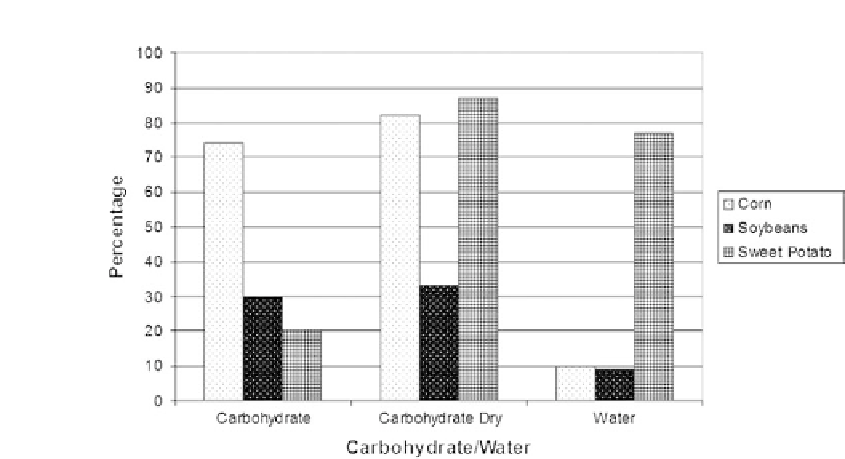Agriculture Reference
In-Depth Information
Figure
2.14.
Carbohydrate and water content of corn, soybeans, and sweet potato. (Data from
Agricultural Research Service Nutrient Data Laboratory USDA National Nutrient Database
for Standard Reference, Release 17, http:
//
www.nal.usda.gov
/
fnic
/
foodcomp
/
Data
/
SR17
/
reports
/
sr17page.htm.)
2.6
FATS, OILS, AND LIPIDS
Figure 2.15 shows two common sources of lipids—fats and oils in the diet, for example,
beef fat and vegetable oil, in this case olive oil. Both are good sources of fats in the diet
and as described below, beef fat is also a source of essential fats. Figure 2.16 gives the
fat content of three common sources: almonds, avocados, and bacon, all high in this
food component.
Fats, oils, and other lipids are discussed as if they occurred as free fatty acids;
however, they are most often in the form of triglycerides, an example of which is
shown in Figure 2.17. They are made up of three fatty acids bonded through their
acid functional group to glycerol, which is also shown in Figure 2.17. Because fatty
acids are the component used for energy production, they are larger than glycerol,
and, because each triglyceride yields three fatty acids when broken down, they are
the component that will be discussed.
The term lipid, in addition to being used for as a general term for fatty acids and
triglycerides, also includes cholesterol and other water-insoluble molecules. While
these other lipids may be found in fats and oils from any source, cholesterol is only
found in lipids from animal sources. Common saturated and monounsaturated fatty
acids are given in Table 2.5. Almost all common fatty acids have an even number of
carbon atoms in their chain. For this reason most odd-numbered fatty acids have not
been given. Dodecanoic, tetradecanoic, tetradecenoic, hexadecanoic, hexadecenoic,








